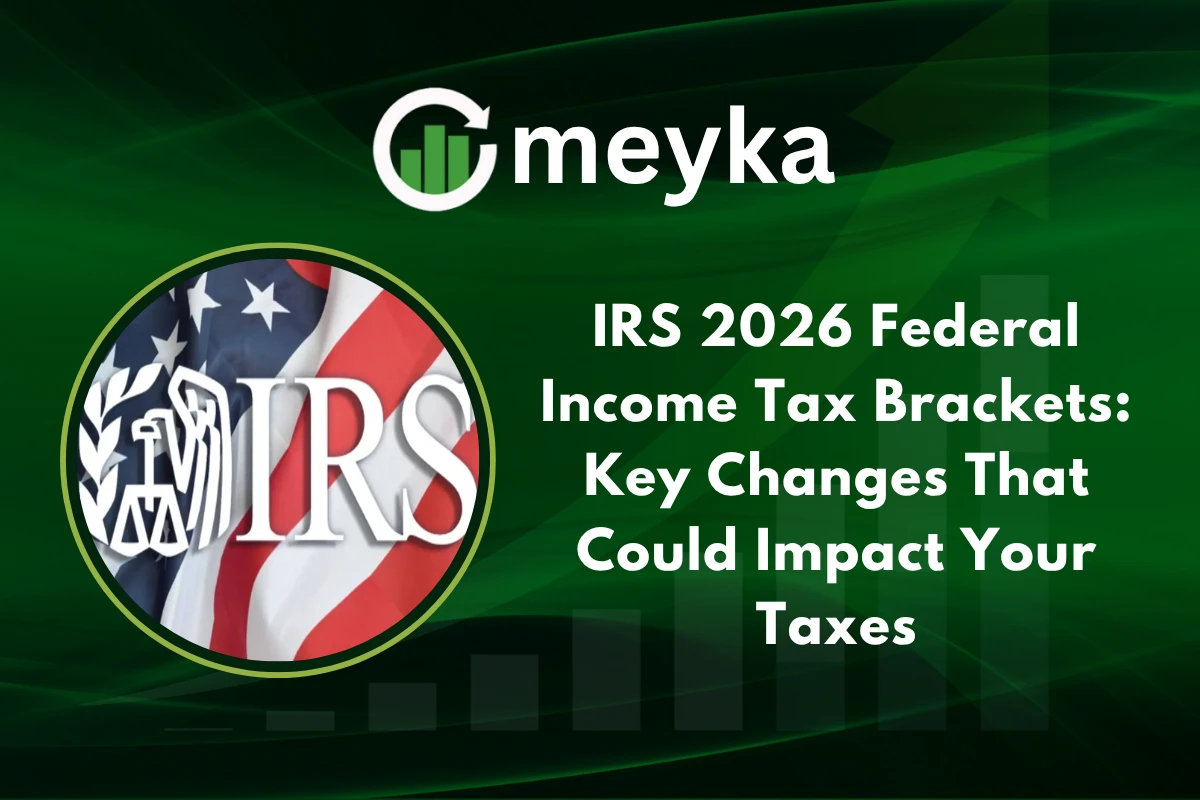IRS 2026 Federal Income Tax Brackets: Key Changes That Could Impact Your Taxes
The IRS 2026 Federal Income Tax Brackets bring important updates for taxpayers, including inflation adjustments, new standard deduction levels, and rate thresholds set under recent legislation. These rules shape how much you pay on each dollar of taxable income, and the IRS says the changes aim to reduce “bracket creep” while reflecting cost-of-living shifts.
The IRS raised the standard deduction and adjusted bracket thresholds for 2026, keeping the seven marginal tax rates from 10 percent to 37 percent, while locking in several TCJA provisions under the new law.
IRS 2026 Federal Income Tax Brackets: What they are and how they work
What are the IRS 2026 Federal Income Tax Brackets?
The IRS 2026 Federal Income Tax Brackets are the income ranges the IRS uses to apply progressive tax rates. They determine the marginal rate you pay on the last dollar of taxable income, not the rate on all your income.
In 2026, the seven tax rates remain 10 percent, 12 percent, 22 percent, 24 percent, 32 percent, 35 percent, and 37 percent.
How do brackets change your tax bill?
Your taxable income is measured after the standard deduction and other adjustments. Each slice of income is taxed at its bracket rate. That means small increases in income do not push all your earnings into a higher rate, which is key to understanding real tax impact.
IRS 2026 Federal Income Tax Brackets: Key changes for 2026
What changed for tax year 2026? Under the recent adjustments, the IRS raised the standard deduction and shifted the income thresholds upward to reflect inflation and legislative updates. These moves are intended to prevent inflation from pushing taxpayers into higher brackets.
The One Big Beautiful Bill Act also made several provisions permanent or modified them, affecting how brackets and deductions look in 2026.
Standard deduction increases
For tax year 2026, the standard deduction is now $16,100 for single filers, $24,150 for heads of household, and $32,200 for married couples filing jointly. This is a noticeable rise from 2025 levels and reduces taxable income for many households.
Marginal rate thresholds and examples
The top marginal rate remains 37 percent for singles with taxable income above $640,600, and for married couples filing jointly above $768,700. Other thresholds include 35 percent above $256,225 for singles, 32 percent above $201,775, 24 percent above $105,700, 22 percent above $50,400, and 12 percent above $12,400.
The lowest 10 percent bracket applies below those amounts. These thresholds apply after deductions and exemptions.
Why does this matter? If your income rises with inflation, these adjustments keep your tax burden stable in real terms, preventing “bracket creep.” The Tax Foundation’s data confirms these percentage ranges and offers calculators to compare years.
IRS 2026 Federal Income Tax Brackets: Capital gains, credits, and other shifts
Capital gains thresholds and credits. The IRS adjustments also affect long-term capital gains brackets and key credits such as the Earned Income Tax Credit and adoption credit.
The One Big Beautiful Bill Act introduced targeted changes that raise or tweak limits on credits and estate tax exclusions; the IRS release lists these adjustments in detail. For instance, the estate tax exclusion rises for 2026, and certain credits receive inflation indexing.
Real-world examples
A single filer with $50,000 in taxable income in 2026 would pay 10 percent on the first $12,400, then 12 percent on the remainder up to the next threshold.
That progressive design means effective tax rates are lower than marginal rates, and the higher standard deduction will reduce many taxpayers’ taxable income. CBS News explains this with a worked example to show how effective rates change with deductions.
IRS 2026 Federal Income Tax Brackets: Expert analysis and public reaction
What experts say Analysts at the Tax Foundation show that locking in certain TCJA rules and applying inflation indexing can shift who benefits most, often providing larger dollar cuts to higher earners while still helping middle-income households through bracket adjustments.
The Tax Foundation’s data and calculators are useful tools for taxpayers to model their own situations.
Public reaction on social media. A recent post from StockMKTNewz on X highlighted how the new IRS brackets could shift middle-class tax burdens.
Another post from b_r_o_d_a_ on X flagged standard deduction increases as helpful to retirees.
Wallstengine on X commented on market implications,
And AFpost on X posted a quick analysis on bracket threshold moves.
These reactions mirror headlines and underscore public interest.
IRS 2026 Federal Income Tax Brackets: How to prepare
What can taxpayers do now? First, review withholding with your employer to avoid surprises in 2027 when you file. Second, estimate taxable income after the new standard deduction and updated brackets.
Consider tax planning moves such as adjusting retirement contributions, timing capital gains, or reviewing itemized deductions. The Tax Foundation and mainstream outlets recommend running scenarios now so you can act before year’s end.
Simple actionable tips
Adjust your W4 if you expect income changes, consult a tax pro if you have complex income or capital gains, and use official IRS resources to confirm exact thresholds for your filing status. The IRS release and Tax Foundation tables are the best authoritative references.
Conclusion: What the IRS 2026 Federal Income Tax Brackets mean for you
The IRS 2026 Federal Income Tax Brackets reflect inflation indexing and legislative changes that keep tax rates steady while increasing the standard deduction and threshold amounts. For many taxpayers, the changes mean a slightly lighter tax burden or protection against bracket creep.
For higher earners, the permanent changes in law may translate into larger dollar benefits.
The practical step is simple: prepare now, check official IRS tables, and run scenarios using trusted calculators or a tax adviser so you can make informed moves before filing season.
FAQ’S
The IRS 2026 Federal Income Tax Brackets outline updated income ranges and tax rates for individuals and couples, reflecting inflation adjustments and policy changes set to begin in 2026.
Middle-income earners may benefit slightly as inflation adjustments raise income thresholds, preventing them from moving into higher brackets despite small pay increases.
The IRS adjusts brackets annually for inflation, but 2026 includes additional structural changes as temporary provisions from the 2017 Tax Cuts and Jobs Act are set to expire.
The standard deduction is expected to increase again in 2026, helping to offset inflation and simplify filing for millions of Americans.
Taxpayers should review their income, update withholdings, and consult tax professionals early to plan for the new income thresholds and deduction changes in 2026.
Disclaimer
This is for information only, not financial advice. Always do your research.






